Moss Musings
Lewis & Clark’s Natural History Club invites students to appreciate nature through a variety of creative programs and activities, including Moss Appreciation Week.
-
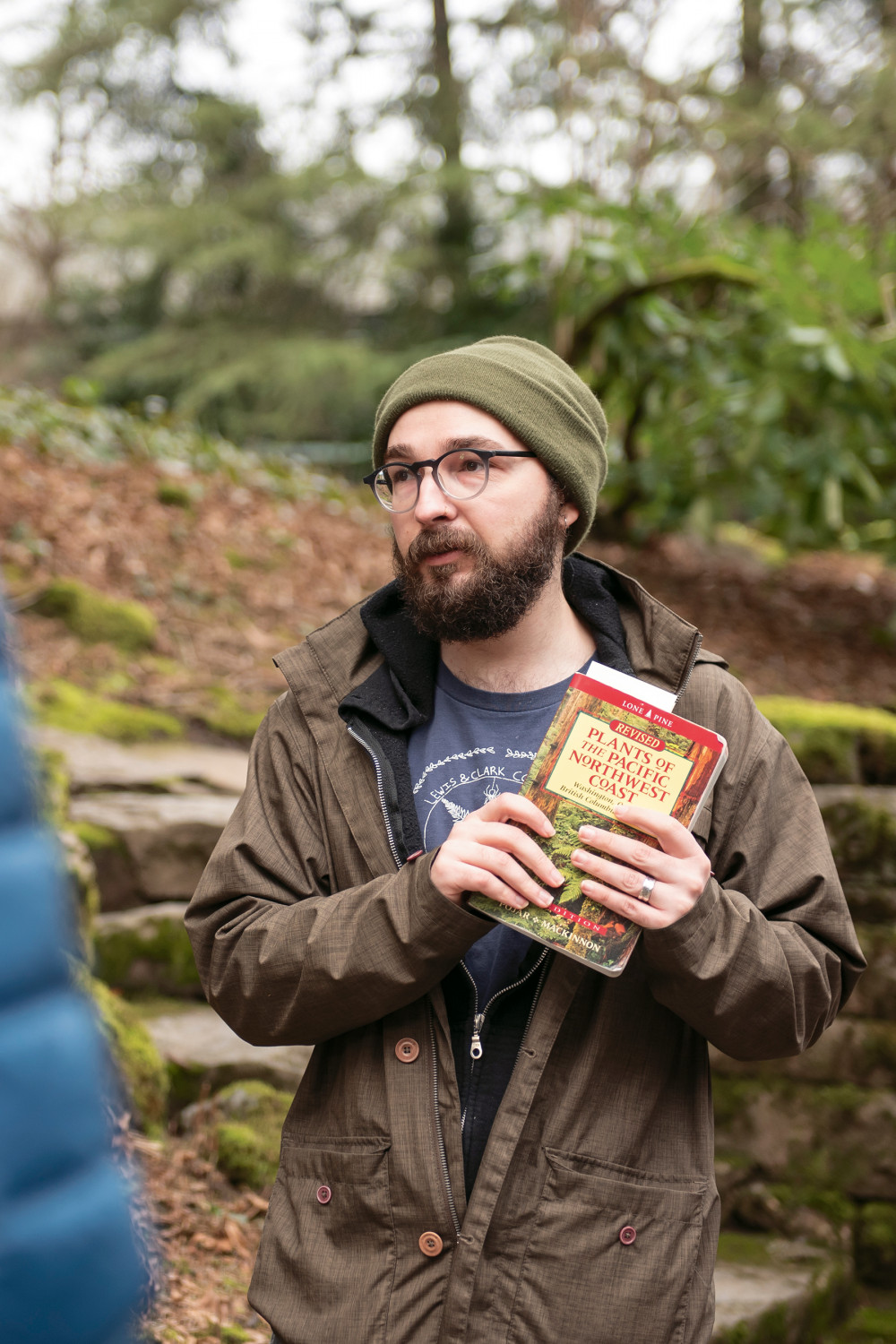 This year’s Moss Appreciation Week included a variety of activities, including a Moss Petting Zoo, a terrarium-building workshop, and a Moss Walk, led by Nate Klimpert BA ’16.
This year’s Moss Appreciation Week included a variety of activities, including a Moss Petting Zoo, a terrarium-building workshop, and a Moss Walk, led by Nate Klimpert BA ’16. -
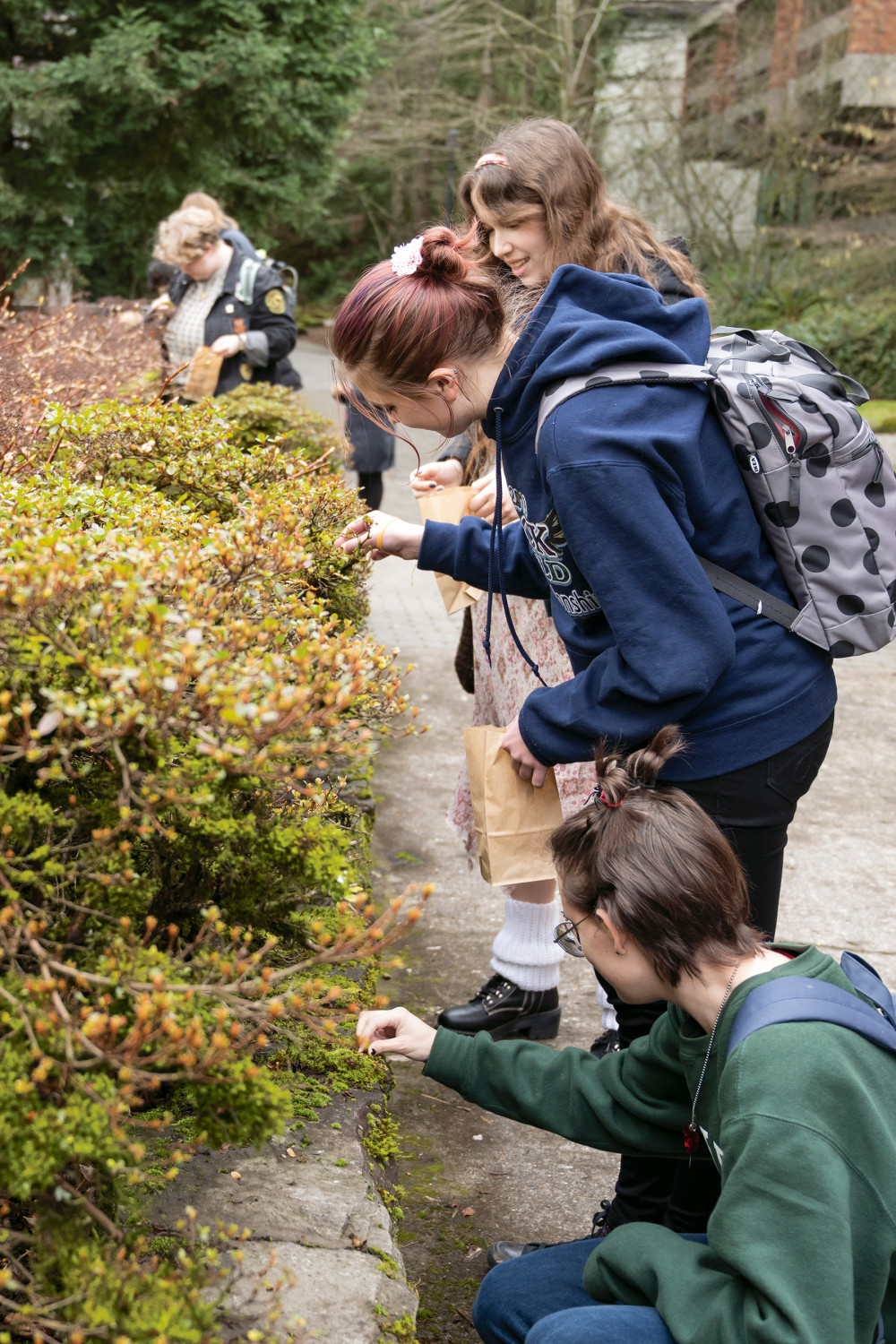 This year’s Moss Appreciation Week included a variety of activities, including a Moss Petting Zoo, a terrarium-building workshop, and a Moss Walk.Nina Johnson
This year’s Moss Appreciation Week included a variety of activities, including a Moss Petting Zoo, a terrarium-building workshop, and a Moss Walk.Nina Johnson -
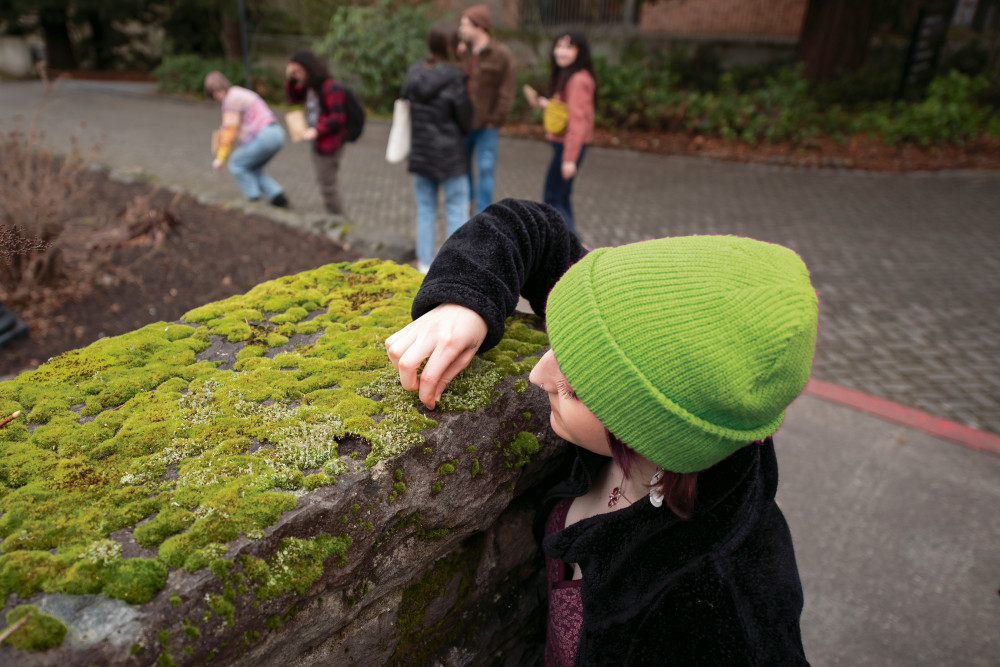 This year’s Moss Appreciation Week included a variety of activities, including a Moss Petting Zoo, a terrarium-building workshop, and a Moss Walk.Nina Johnson
This year’s Moss Appreciation Week included a variety of activities, including a Moss Petting Zoo, a terrarium-building workshop, and a Moss Walk.Nina Johnson -
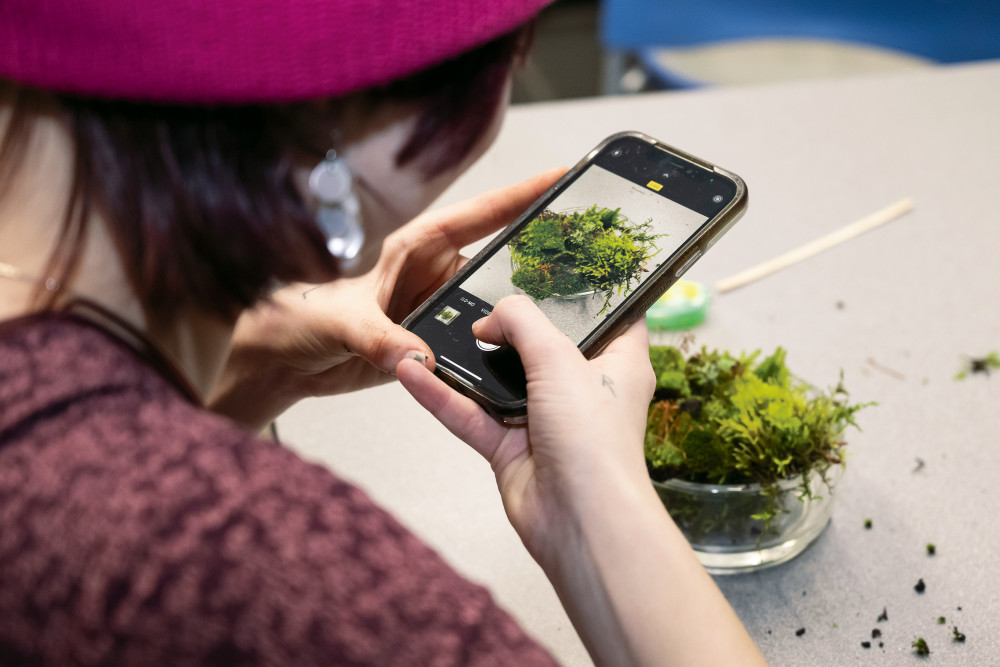 This year’s Moss Appreciation Week included a variety of activities, including a Moss Petting Zoo, a terrarium-building workshop, and a Moss WalkNina Johnson
This year’s Moss Appreciation Week included a variety of activities, including a Moss Petting Zoo, a terrarium-building workshop, and a Moss WalkNina Johnson -
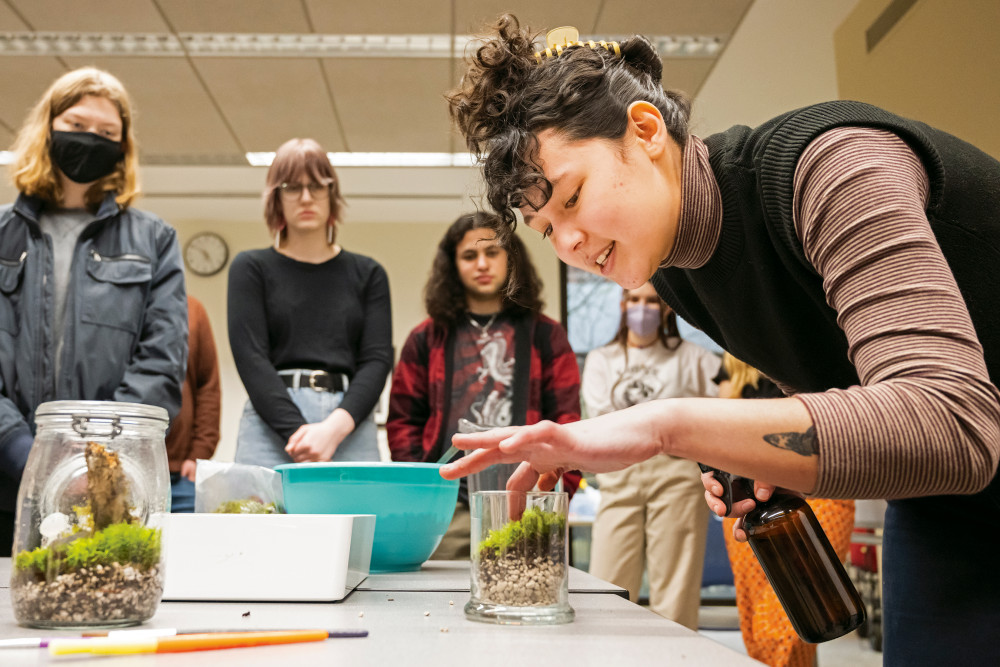 This year’s Moss Appreciation Week included a variety of activities, including a Moss Petting Zoo, a terrarium-building workshop, and a Moss WalkNina Johnson
This year’s Moss Appreciation Week included a variety of activities, including a Moss Petting Zoo, a terrarium-building workshop, and a Moss WalkNina Johnson
Photos by Nina Johnson
Lewis & Clark has long been known for its natural beauty. The lush green campus, with a scenic view of Mount Hood, serves as a small oasis set apart from the bustle of downtown Portland. Lewis & Clark abounds with vegetation: from towering firs and big-leaf maples to delicate trillium and Oregon grape. It also has moss––lots and lots of moss––that coats any welcoming surface.
In recognition of moss, a prolific yet underappreciated plant, Lewis & Clark’ Natural History Club held its fifth annual Moss Appreciation Week in mid-February. The popular campus event featured a full slate of activities, including a Moss Petting Zoo and a terrarium-building workshop. Nate Klimpert BA ’16, who is currently a PhD candidate in the Department of Botany at the University of British Columbia, served as the event’s keynote speaker. His scholarship focuses on phylogenomics (the comparison of genomes to better understand evolutionary relationships) and molecular evolution in heterotrophic plants (which depend on other plants for their food). He also led a walk around campus, which was informed by his doctoral research, to identify parasitic plants.
The Natural History Club is more than 60 members strong and welcomes students of any major. There are no requirements, and no prior knowledge of natural history is needed. Parvaneh Abbaspour, science and data services librarian in Watzek, is the club’s advisor. It’s been “a labor of love” since the club’s inception eight years ago, she said.
According to coleader Jemma Montgomery BA ’23, a biology major, the Natural History Club is designed to “appreciate the wildlife that goes underappreciated.” As a first-year student, she attended the college’s Pio Fair, an annual showcase of more than 100 clubs, organizations, and departmental opportunities for undergraduate students. It was there that she and fellow coleader Rowan Moreno BA ’23, also a biology major, discovered the Natural History Club and the opportunities it provides for engaging with nature.
“We were both obsessed immediately,” Montgomery said. “The club is all about getting people interested in the nature that surrounds them.”
The Natural History Club also hosts a recurring natural dye workshop, developed by Moreno. The workshop is part of a larger project to establish a dye garden in a plot on campus. Moreno instructs students on the use of cempaxochitl (marigolds) for producing yellow-orange pigments, including the dye’s traditional Mexica applications as part of the Mexican holiday Día de Muertos (Day of the Dead), which has Indigenous roots.
The first two workshops on using cempaxochitl, Japanese indigo, campeche chips, and madder root to bundle-dye bandanas reached full capacity.
“I hope that students are able to foster their love for nature through our club,” Moreno said. “I see the club as a great way to educate students while also engaging their creativity. I hope students are walking away from our events feeling like they have learned a lot––while also having a fun time.”
Over the club’s lifetime, many members have also had the opportunity to pursue for-credit practica with support from club resources. As part of this experience, students investigate a specific topic and develop practical skills for future research. For example, this spring, Deanna Sunnergren BA ’24, a biology major, is completing a terrestrial gastropod curation project, meaning they are collecting different species of slugs and snails on campus. Work products from student practica typically contribute to the L&C Natural History Collection.
In the coming years, Montgomery and Moreno would like to see younger students continue to get involved and tailor the club’s events to their interests, however niche.
“Seeing the wide range of students that the club’s events appeal to has given me hope for the future of the planet,” Moreno said. “It shows how many people are interested in learning about nature and the joy that the natural world can bring.”
More L&C Magazine Stories
Lewis & Clark Magazine is located in McAfee on the Undergraduate Campus.
MSC: 19
email magazine@lclark.edu
voice 503-768-7970
fax 503-768-7969
The L&C Magazine staff welcomes letters and emails from readers about topics covered in the magazine. Correspondence must include your name and location and may be edited.
Lewis & Clark Magazine
Lewis & Clark
615 S. Palatine Hill Road MSC 19
Portland OR 97219

